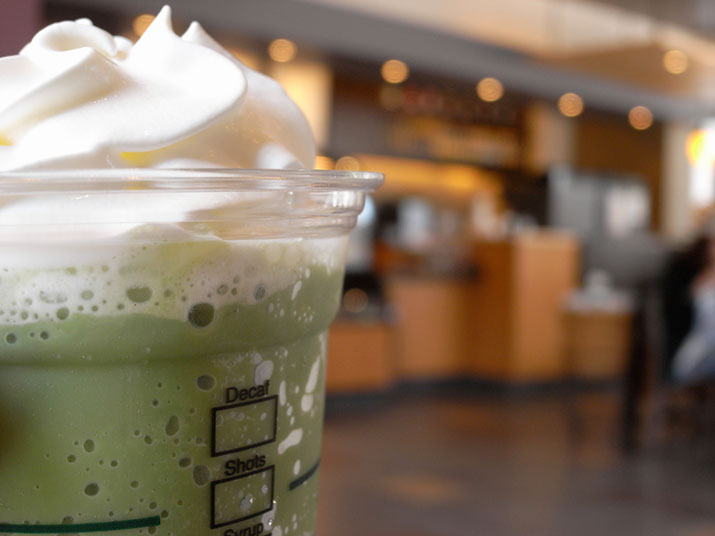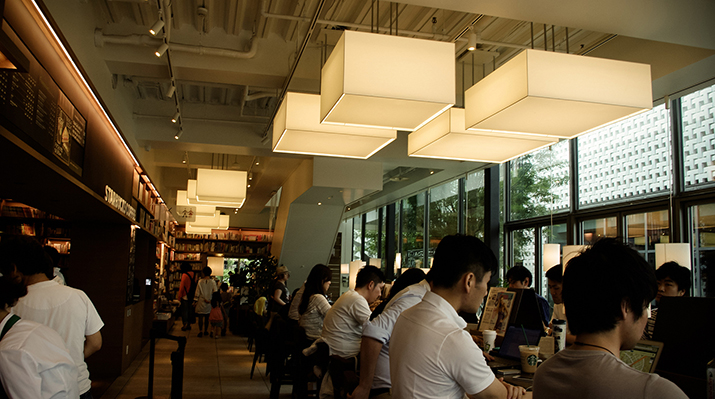
Btrax Design Company > Freshtrax > Why Japan Chose...
Why Japan Chose Starbucks
Approximately 18 years ago, Starbucks opened up their first location outside North America: Japan. Today, Starbucks Japan has become the largest coffee chain in Japan with a market share of 48.0%. Their store locations have grown by an average of 7.3% per annum over the past decade—approximately 70 new stores a year, and now over 1000 stores in total.
Their aggressive expansion plan projects a goal of 10% annual growth in their locations (approximately 100 new stores a year) in the coming three years. Not to mention, revenue has grown by 14.7% in the past five years. It seems that more than a few Japanese consumers are choosing Starbucks over the other coffee shops, like Detour, Saintmarc, or Tully’s Coffee.
It’s clear that Starbucks Japan is a great success story. But the question remains: Why? Why do we choose Starbucks over other coffee shops? Why are we willing to wait in that never-ending line to pay a premium price and then struggle to find an empty seat?
Well, the secret may lie in the balance Starbucks has found between maintaining the trendiness of being an American brand and adapting to the Japanese market. From the moment Starbucks set foot in Japan, innovation and a fresh American perspective were at the heart of their strategy.
Taking the Innovative Approach
Starbucks was the first café to offer a wide range of drinks with customizable options. Lattes made with soymilk and reduced sweetness were unheard of at the time, and Frappucinos offered non-coffee drinkers an option that made it the top-selling product today.
 Photo by: Kiuko
Photo by: Kiuko
Starbucks was the first coffee chain to implement a non-smoking environment, which appealed to the younger Japanese generations. In addition, they added an exciting new alternative for their suburban customers—drive-thrus. Based on their FY13 annual report, the 20 new drive-thru locations had 25% greater revenue than the overall average the year before.
Starbucks Japan also recently partnered with Amazon Japan to offer Kindle tablets at one of their newly renovated locations in Roppongi, Tokyo—otherwise known as the foreign business district. This is in response to the fact that many businessmen require larger screens than what their smartphones provide for the applications they use. Since they do not have their laptops on them, Starbucks saw the demand for those who are on break to still be connected to the news, work, or their personal interests.
 Photo by: Saku Takakusaki
Photo by: Saku Takakusaki
Lastly, Starbucks has realized that it is not just about the product, but the experience as well. They are consistently on top of trends and renovating their stores to maintain the look and feel of a trendy American café. Their use of digital marketing through social media platforms has expanded their Starbucks fan community. They have even hosted a Frappucino themed fashion show in Tokyo with models and a live orchestra, offering samples of their newest drinks. It’s not a stretch to say that they have been the market leader in innovation.
Understanding Japanese Culture
Innovation has not been the only factor in their success. Starbucks has also taken the extra step to become familiar with Japanese culture. An example is the importance of top quality customer service in Japan. Starbucks has also removed their signature service of asking for a customer’s name when writing down their order as a result of the Japanese highly valuing their privacy.
 Photo by: Starbucks Japan
Photo by: Starbucks Japan
To address the Japanese love of tradition and national festivals, Starbucks has developed limited-time seasonal drinks such as the Sakura (cherry blossom) Frappuccino. They have also implemented “concept stores” that are specifically designed to complement the atmosphere of certain neighborhoods, and whose product offerings have been changed to reflect Japanese tradition more thoroughly.
Investing in Training and Development
Another aspect they have focused on perfecting is the training and development of their employees. Starbucks requires their baristas at Starbucks Japan to go through a two-month extensive training program that makes them experts in both Starbucks drinks and Starbucks coffee beans.
They provide both a product manual to their partners (baristas), and assign a mentor for the customer service portion of the training. Prior to becoming a certified partner, trainees are expected to pass both practical and written tests.
 Photo by: Julie Gibson
Photo by: Julie Gibson
You may be surprised to hear that baristas also wear two different apron colors—green or black. This is due to the globally implemented Coffee Master Program, where a barista may wear a black apron only if they are a “Coffee Master.” To become one, you are required to pass an exam on extensive coffee bean theory, held once a year.
At Starbucks Japan, one in twelve baristas have been certified as a Coffee Master, and you can also find these black aprons around the world. Only in Japan, however, will you find the first ‘black apron–only’ Starbucks, where all baristas are coffee masters. The store features a coffee concierge counter where the beans are brewed using only a coffee press and a metal coffee filter, with a selection of 24 premium coffee beans available for sampling.
Conclusion: A finely tailored customer experience
While many businesses fail to understand the extent to which Japanese culture cherishes tradition, Starbucks has managed to combine their exciting American flair with the underlying values of the Japanese to create an unbeatable experience.
And although they have built the reputation of a café that offers innovative products and exceptional customer service, they have also become a place that can satisfy their customers’ other motives for visiting a café: to meet with friends, study, or conduct a quick business meeting. Today, Starbucks has become the go-to coffee shop in Japan, serving both quality products and a comfortable atmosphere.
Now the question remains: How are you going to find that perfect balance of foreign allure and cultural adaptation for the consumers in your market?
 |
Marie Rosszell – Guest Contributor
Marie Rosszell is a business student at Wilfrid Laurier University (Canada), originally from Tokyo, Japan. A social entrepreneur with a passion for marketing, Marie is gearing up to kick start her career. |
Photo by: kmf164







